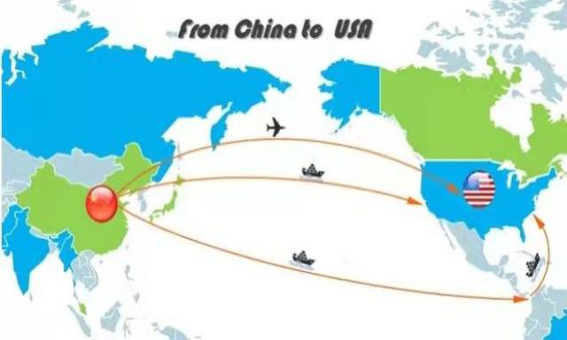When exporting to the USA by sea, you should pay attention to: AMS and ISF declarations, as well as BOND
2025-05-17 10:34

1.AMS declaration
AMS is the abbreviation of Automated Manifest System (American Manifest System), also known as 24-hour manifest forecast, also known as the US Customs Anti-Terrorism Manifest. According to the regulations of the US Customs, all goods bound for the United States or transiting through the United States must declare AMS to the US Customs 24 hours before loading.
AMS information is sent directly to the US Customs database using the system designated by the US Customs, and the US Customs system automatically checks and replies. The goods can only be loaded on board after the reply is confirmed, otherwise, they will not be able to load on board.
2.ISF declaration
ISF is Importer Security Filing. ISF information refers to the Importer Security Filing, also known as the 10+2 data requirements. This is a series of data required by the U.S. Customs and Border Protection (CBP) for importers to provide before goods enter the United States.
Contents of ISF 2:
VESSEL STOW PLAN
CONTAINERSTATUS MESSAGE
Contents of ISF 10:
lmporterof Record Number
Consignee Number
Seller(Owner)name/address
Buyer(Owner)name/address
Ship to Party
Manufacturer(supplier) name and address
Country of Origin
Complete the declaration no later than 24 hours before the port
Container Stuffing Location
Consolidator(Stuffer) name/address
When importers fail to provide ISF information in a timely manner, they may face the following:
Delayed customs clearance
If the importer does not provide ISF information within the required time, the U.S. Customs and Border Protection (CBP) can delay the customs clearance of the goods. This means that the goods may be stranded at the port or warehouse and cannot be delivered to the destination in time, resulting in additional storage fees.
Penalties
CBP can impose fines on importers who fail to provide ISF information in a timely manner. Depending on the severity and number of violations, the amount of the fine can be high. The amount of the fine is determined at the discretion of CBP, but it can be up to $5,000.
Detention of goods
If ISF information is not provided in a timely manner or the information provided is inaccurate, CBP can detain the goods and inspect the goods and require the importer to provide the correct information. This will result in the importer needing to communicate and negotiate with CBP, which will extend the processing time of the goods and add additional costs
3.BOND
Bond is a type of security deposit that US importers need to purchase from US Customs. It is actually an insurance initiated by US Customs, covering the US Customs and purchased by the US importer. If the importer fails to pick up or abandon the goods and does not pay any fees, in addition to conducting an expected auction of the goods, the US Customs can also use Bond to apply to the insurance company for a series of cost losses incurred from importing the goods into the United States, such as storage fees, demurrage fees, and so on.
In order to avoid the risk of importers violating regulations during customs clearance, the U.S. Customs requires importers to purchase bonds. If importers do not purchase bonds, they cannot pass customs filing, their goods cannot complete customs clearance, and they may even be rejected upon arrival at the port. Therefore, U.S. importers must purchase bonds and provide the consignee's tax number for customs clearance.
According to different usage scenarios and guarantee methods, US customs clearance bonds are mainly divided into:
Annual Bond: Annual Bond or Continuous Bond. It only needs to be purchased once a year, suitable for importers who frequently import goods within a year, allowing enterprises to use it multiple times within a certain period to reduce the cost of a single transaction.
Single Bond: Single Bond or ISF Bond, suitable for enterprises that occasionally import.
Written by Vivi
